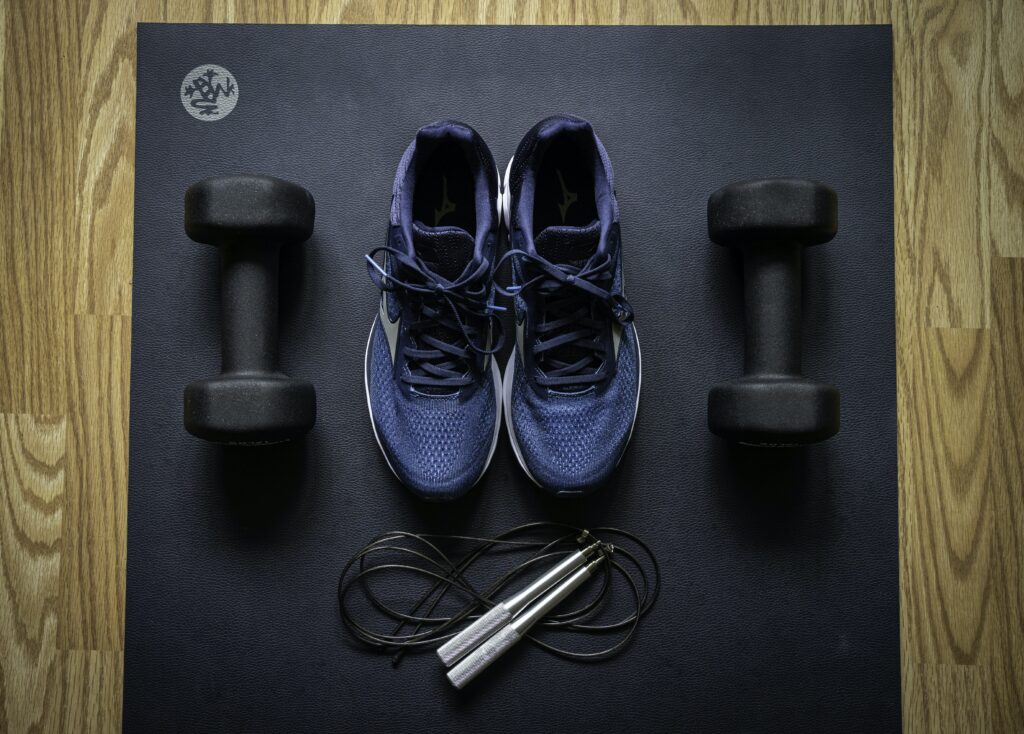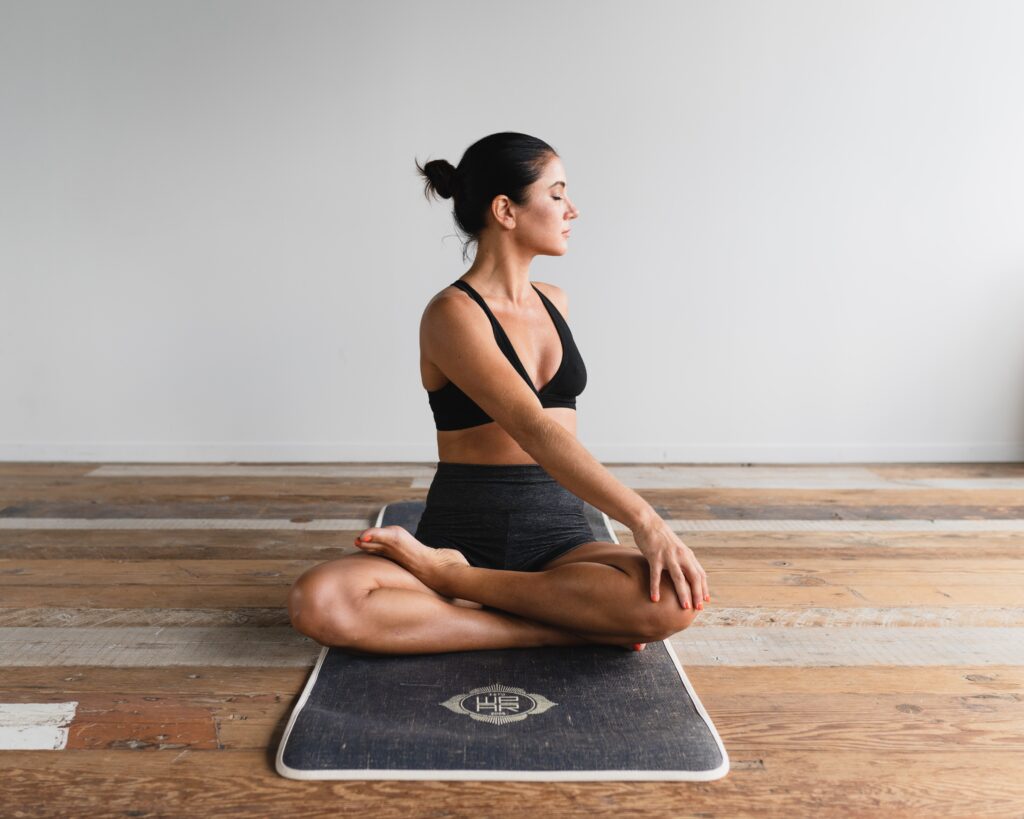7 Exercise Routines if You’re New to Working Out
Are you a beginner eager to embark on a transformative fitness journey right from the cozy confines of your home? This comprehensive article will be your guide, presenting 7 meticulously crafted exercise routines tailored for novices like yourself.

Delve into the world of invigorating stretching exercises, pulse-pounding HIIT workouts, heart-pumping cardio sessions, empowering strength training regimens, effective weight training routines, serene yoga flows, and even dynamic dance workouts – an eclectic array catering to every individual.
Brace yourself to perspire and conquer your fitness aspirations with unparalleled zest through these seamlessly curated routines, designed with beginners in mind.
Stretching Exercises for Beginners
The stretching exercises for beginners include calf stretches, leg swings, hamstring stretches, quadriceps stretches, and glute stretches. These exercises are essential for improving muscle flexibility and preventing injuries during workouts. Stretching helps to lengthen the muscles and increase their range of motion.
Stretching has many benefits for beginners. It helps to improve blood circulation, which can reduce muscle soreness and promote faster recovery after exercise. Stretching also improves posture and reduces the risk of muscle imbalances that can lead to injuries. By incorporating proper stretching techniques into your routine, you can enhance your overall performance and achieve better results from your workouts.

To ensure that you are stretching correctly, it is important to follow proper stretching techniques. Avoid bouncing or jerking movements while stretching as this can cause injury. Instead, hold each stretch for 15-30 seconds and breathe deeply throughout the stretch. Remember to stretch both sides of the body equally to maintain balance.
Common stretching mistakes include not warming up before stretching or holding a stretch too long without releasing tension gradually. It is also important not to push yourself too hard during a stretch as it should be comfortable but not painful.
Incorporating stretching into your workout routine is crucial for injury prevention. By properly preparing your muscles through stretching, you can reduce the risk of strains or sprains during exercise. Make sure to prioritize stretching before and after each workout session to keep your body safe and performing at its best.
HIIT Workouts for Beginners
Try incorporating HIIT workouts into your fitness routine for a high-intensity and effective workout. HIIT, or High-Intensity Interval Training, is a great option for beginners because it offers numerous benefits.
First, it helps to improve cardiovascular fitness and burn calories in a short amount of time. Second, HIIT workouts can be modified to accommodate different fitness levels. If you’re just starting out, you can decrease the intensity or duration of each exercise and gradually increase as you get stronger. Third, there are some common mistakes to avoid during HIIT workouts such as ignoring proper form and overtraining. Make sure to listen to your body and rest when needed.
When it comes to the best HIIT exercises for beginners, squats, commandos, heel taps, alternating lunges, and glute bridges are excellent options that target multiple muscle groups. To create a HIIT workout plan for beginners, start by selecting 5-7 exercises and performing each one for 30 seconds with a 10-second rest in between. Repeat this circuit 2-3 times depending on your fitness level.
In conclusion, incorporating HIIT workouts into your fitness routine can provide numerous benefits for beginners. Just remember to modify the exercises according to your fitness level, avoid common mistakes during the workouts, choose the best exercises that target multiple muscle groups, and create a structured plan that suits your needs. If you’d like to have personalized workout and coaching check out this link for more.
Cardio Workouts for Beginners
Get your heart pumping and burn calories with cardio workouts like jump rope, burpees, bear crawl, dumbbell curl-to-press or double kettlebell swing, and walking.
Cardio workouts provide numerous benefits for beginners. They help improve cardiovascular health, increase stamina and endurance, promote weight loss, and boost mood and energy levels.
To maximize the benefits of cardio workouts as a beginner, it’s important to avoid common mistakes such as overdoing it too soon or neglecting proper form. Start slow and gradually increase intensity over time to prevent injury and allow your body to adapt. Incorporating interval training or adding resistance can also help increase the intensity of your cardio workouts.
For weight loss specifically, the best cardio exercises for beginners include high-intensity activities like jump rope or burpees that engage multiple muscle groups.
Strength Training Workouts for Beginners
Strength training workouts can help you build muscle, improve strength and stability, and enhance your overall fitness levels. To get started with strength training as a beginner, it’s important to have progression strategies in place. Start with lighter weights and gradually increase the intensity each week to challenge your muscles and continue making progress.
When it comes to equipment recommendations, dumbbells are necessary for strength training. Begin with light to moderate weights and aim for two to three sets with rest in between. As your fitness level improves, you can adjust the weight accordingly.

Proper form techniques are crucial in order to maximize the effectiveness of your strength training workouts and prevent injuries. Make sure to maintain proper posture, engage the correct muscles, and use controlled movements throughout each exercise.
It’s also important to be aware of common mistakes to avoid when strength training. These include using too much weight without proper form, neglecting certain muscle groups, and not allowing enough rest between workouts.
The benefits of strength training go beyond building muscle. It can also help improve bone density, boost metabolism, increase energy levels, enhance mood, and reduce the risk of chronic diseases such as osteoporosis.
Incorporating strength training into your workout routine as a beginner is a great way to achieve various health and fitness goals. With proper progression strategies, equipment recommendations, proper form techniques, avoiding common mistakes, and reaping the many benefits that come along with it.
Weight Training Workouts for Beginners
Engaging in weight training as a beginner is a remarkable step towards enhancing your fitness journey. To maximize your weight training workouts as a beginner, focus on using proper form techniques and gradually increasing the weight as you progress. This will help you reap the benefits of weight training while minimizing the risk of injury. Here are some key points to keep in mind:
Benefits of Weight Training for Beginners:
- Builds Strength and Muscle Mass: Weight training serves as a powerful catalyst for augmenting both muscular strength and mass, contributing to an overall robust physique.
- Boosts Metabolism and Caloric Burn: These workouts trigger an elevated metabolic rate, leading to heightened calorie expenditure, facilitating weight management.
- Enhances Bone Density and Reduces Osteoporosis Risk: Engaging in weight-bearing exercises strengthens bones, reducing the vulnerability to osteoporosis.
Avoiding Common Weight Training Pitfalls:
- Meticulous Form is Key: Incorrect form can pave the way for injuries. Focus on executing exercises with precision, prioritizing technique over weight.
- Gradual Progression over Heavy Loads: Patience is paramount. Prioritize mastering proper technique before attempting heavier weights to avert unnecessary strain.
- Embrace Rest Days: Integrating sufficient rest intervals into your routine is pivotal for muscle recuperation and growth.
Sustaining Motivation in Weight Training:
- SMART Goals: Craft goals that are Specific, Measurable, Attainable, Relevant, and Time-bound. This strategic approach fuels your commitment.
- Community and Companionship: Partnering with a workout buddy or becoming part of a supportive fitness community fosters motivation and camaraderie.
- Track Your Triumphs: Document your progress meticulously to glean insights into your advancement and celebrate milestones.
Prior to initiating your weight training session, priming your muscles with a thorough warm-up is vital to stave off potential injuries. Dynamically engaging your body through leg swings, arm circles, and other dynamic stretches serves as an effective warm-up ritual. Furthermore, upholding impeccable form throughout each exercise is imperative. Maintaining a neutral spinal alignment, activating the precise muscle groups, and circumventing undue momentum safeguard the integrity of your routine. By integrating these principles, your weight training journey as a novice is poised for success and profound transformation.
Yoga Workouts for Beginners
Are you interested in trying yoga workouts but don’t know where to start? Yoga poses for flexibility can help you improve your range of motion and loosen up tight muscles. Beginner yoga routines for relaxation are perfect for those looking to unwind and find inner peace. If you’re feeling stressed, yoga for stress relief can help calm your mind and promote relaxation. Additionally, yoga for back pain relief can provide gentle stretches and strengthening exercises to alleviate discomfort in the lower back. And if you’re looking to improve your balance and coordination, incorporating yoga into your fitness routine can be beneficial.
Some popular yoga poses for flexibility include the Downward Dog Pose, the Forward Fold Pose, and the Butterfly Pose. Beginner yoga routines often focus on gentle movements that promote relaxation, such as the Child’s Pose or the Corpse Pose. When it comes to relieving stress, practices like deep breathing exercises and meditation are commonly incorporated into yoga sessions.
To target back pain, poses like the Cat-Cow Pose and the Child’s Pose can be helpful in stretching out the spine and relieving tension in the back muscles. And if improving balance and coordination is a goal, incorporating standing poses like Tree Pose or Warrior II pose into your practice can be beneficial.
Dance Workouts for Beginners
If you’re looking for a fun and engaging way to get fit, dance workouts for beginners might be just what you need. Not only will they help you improve your coordination and flexibility, but they also offer several other benefits that make them a great option for those starting their fitness journey.
Here are some of the benefits of dance workouts for beginners:
- They provide a full-body workout, targeting different muscle groups and increasing overall strength.
- Dance workouts can help improve cardiovascular endurance and burn calories, making them an effective tool for weight loss.
- Regular dance sessions can enhance coordination and balance, leading to better body control and agility.
When it comes to different types of dance workouts for beginners, there are plenty of options to choose from. Here are three popular ones:
- Zumba: This Latin-inspired dance workout combines fast-paced moves with energetic music, creating a high-energy atmosphere.
- Cardio dance workout: These routines focus on cardiovascular endurance while incorporating various dance styles like hip-hop or salsa.
- Barre workout: Combining elements of ballet, Pilates, and yoga, barre workouts help strengthen muscles through small isometric movements.
Embarking on Dance Workouts: Tips for Beginners
If you’re setting foot into the realm of dance workouts for the very first time, fear not! Here’s a treasure trove of guidance to set you on the right path:
Discover Beginner-Friendly Tutorials and Classes Online
The initial step towards mastering dance workouts involves seeking out accessible online tutorials or classes tailored explicitly for beginners. These invaluable resources take you through the basic steps in a methodical manner, ensuring you establish a solid foundation for your dance routine.
Progress Gradually: Start Short, Build Steadily
As a newcomer, it’s wise to commence your dance fitness journey with shorter sessions. This approach allows your body to adapt at its own pace. With time and consistent effort, as your endurance and overall fitness levels show improvement, you can confidently start extending the duration of your dance workouts.
Modify Moves and Embrace Breaks: Enjoy the Process
Embrace a philosophy of flexibility and self-care as you engage in dance workouts. Feel free to adapt movements based on your comfort level, and don’t hesitate to take short breaks when needed. Remember, the essence of dance workouts lies in the enjoyment of the process, while also respecting your body’s signals.
Groove Your Way to Health with Dance Workouts
Bid adieu to conventional exercise routines and step into the realm of dance workouts, where each session becomes a celebration of joy and rhythm. As you slip into your dancing shoes, you’re embarking on a dynamic path towards a healthier, more vibrant version of yourself. Let the music guide you, let your body flow, and let the journey to improved well-being commence with the beats of your heart and the rhythm of your spirit!
Conclusion
In conclusion, you now have a variety of exercise routines to choose from as a beginner. Whether you prefer stretching exercises, HIIT workouts, cardio workouts, strength training workouts, weight training workouts, yoga workouts, or dance workouts, there is something for everyone.
Remember to start slowly and gradually increase the intensity as you get stronger. Don’t forget to warm up and stretch before each workout to prevent injuries.
With dedication and consistency, you will be able to reach your fitness goals in no time. Keep pushing yourself and enjoy the journey!

